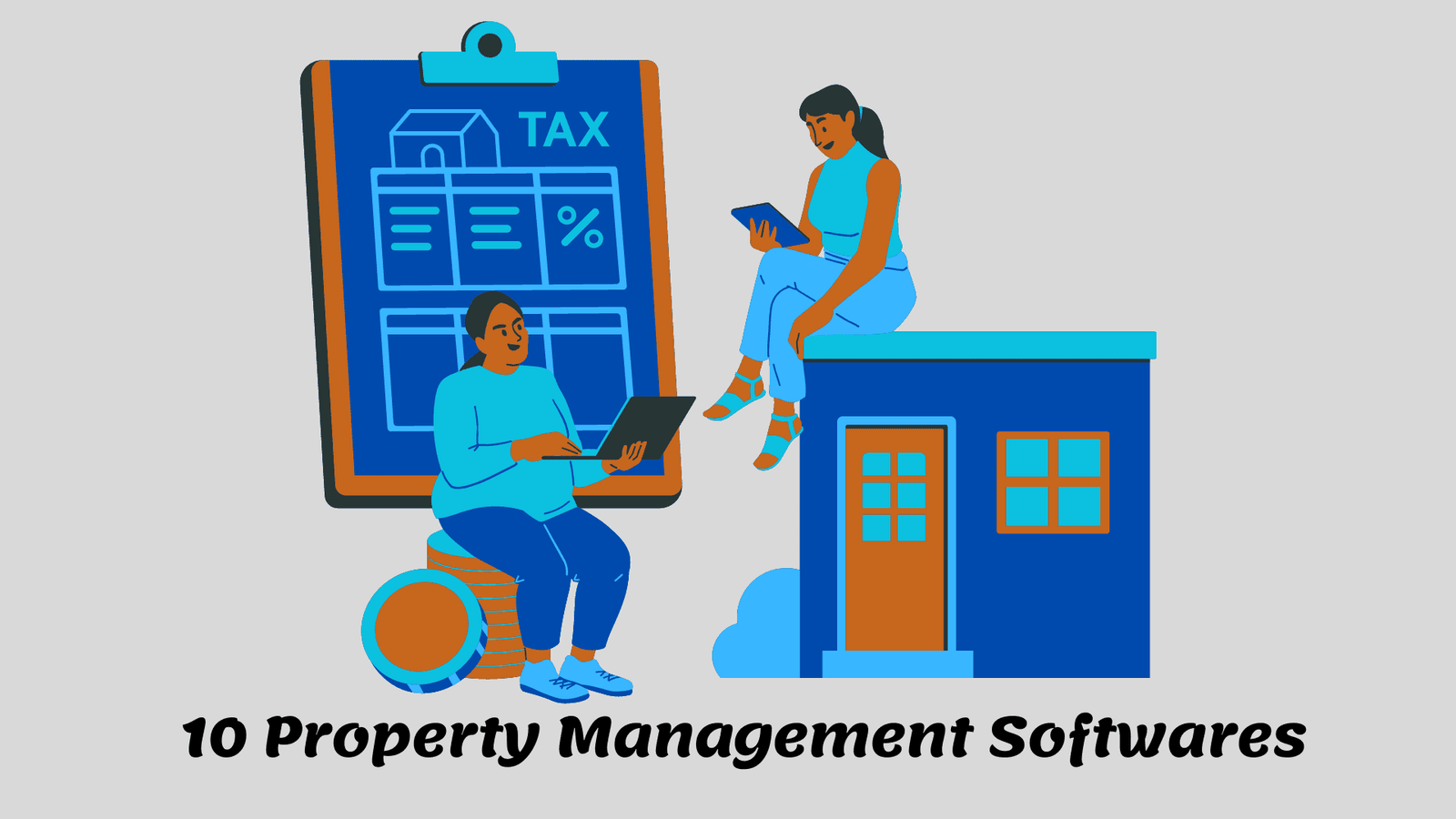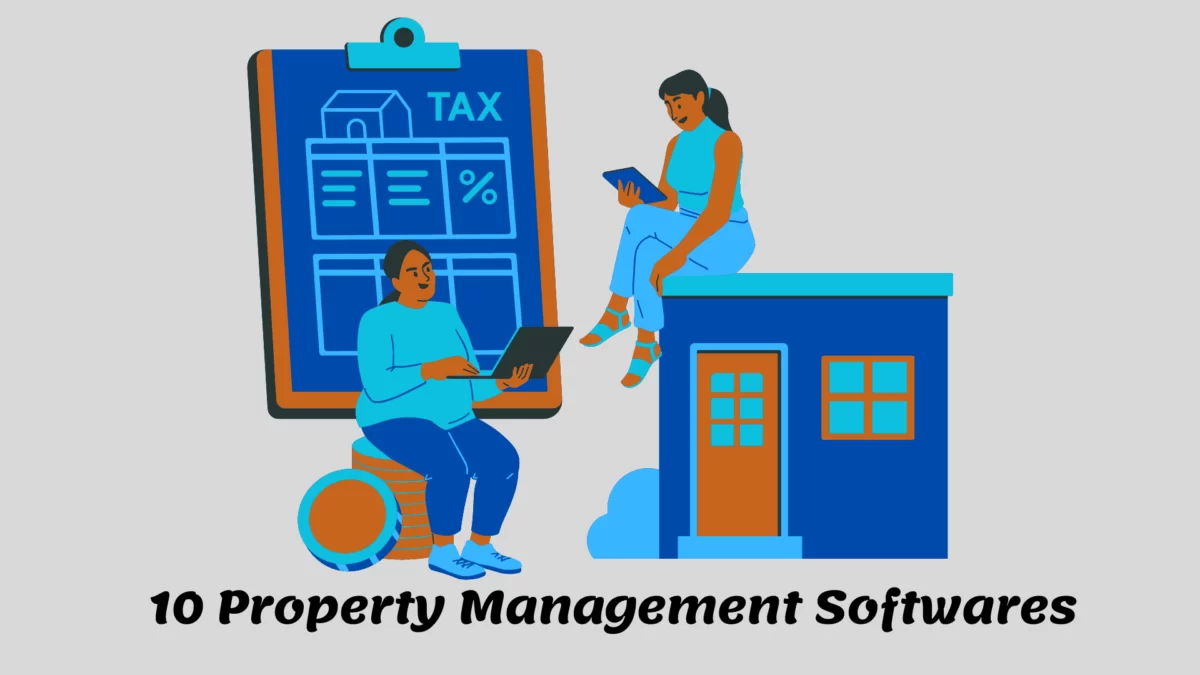Construction supply chain management software is a specialized software solution that helps construction companies manage their supply chain processes more efficiently. It provides tools and functionalities to streamline workflows, improve collaboration, and optimize inventory levels, ultimately leading to cost savings and increased productivity. The software helps companies to manage their inventory levels, forecast demand, and track orders and it gives a clear oversight of the entire supply chain, including suppliers, contractors, and subcontractors. This can lead to a reduction in downtime, costs, and an increase in profitability.
How to Choose Construction Supply Chain Management Software
Construction Supply Chain Management Software is essential for efficiently managing the complex construction supply chain. It helps companies to optimize their inventory levels, reduce waste, and control costs by providing real-time information on the status of materials and orders.
The software also helps to streamline workflows, improve collaboration among teams, and increase productivity by automating administrative tasks. By providing complete visibility into the supply chain, from the initial design stages to the final delivery of the project, Construction Supply Chain Management Software ensures that companies are better equipped to manage risks, minimize delays, improve responsiveness, and meet project deadlines.
The Best Construction Supply Chain Management Software in 2023
Here are the 6 Best Construction Supply Chain Management Software in 2023 below are:

Shippabo
Shippabo is a cloud-based software platform that provides solutions for managing and optimizing international shipping and logistics. It offers features for freight management, vendor management, shipment tracking, and supply chain visibility. Here are some potential pros and cons of using Shippabo:
Pros of Shippabo:
- Streamlined Freight Management: Shippabo simplifies the process of managing freight and shipping logistics. The platform provides tools for comparing and selecting freight quotes, booking shipments, generating necessary shipping documents, and tracking shipments in real time. Also, This can help streamline the freight management process and reduce manual effort.
- Supply Chain Visibility: Shippabo offers supply chain visibility features, allowing users to track shipments and monitor their progress throughout the entire logistics process. This includes real-time tracking updates, shipment status notifications, and milestone tracking. Improved visibility helps users stay informed, identify potential issues, and make proactive decisions to ensure timely delivery.
- Vendor Management: The platform enables users to manage multiple vendors and suppliers in one place. Users can collaborate with vendors, share shipment information, and communicate through the platform. This centralized approach enhances communication and coordination between different parties involved in the shipping process.
- Customization and Integration: Shippabo provides customization options and integration capabilities. Users can tailor the platform to their specific needs and workflows, ensuring it aligns with their business requirements. Additionally, Shippabo integrates with various third-party systems, such as ERP (Enterprise Resource Planning) software, inventory management systems, and e-commerce platforms, facilitating seamless data exchange and process integration.
- Data and Analytics: Shippabo offers reporting and analytics features that provide insights into shipping performance, costs, and trends. Users can generate reports, analyze data, and identify opportunities for optimization and cost savings. Also, The ability to access and leverage data can help improve operational efficiency and decision-making.
Cons of Shippabo:
- Learning Curve: Shippabo is a feature-rich software platform, and users may experience a learning curve when first using the software. The platform’s extensive functionalities and complexity may require training and time to become proficient in navigating and utilizing all its features.
- Pricing Structure: Shippabo’s pricing structure may be relatively high, especially for smaller businesses or individuals with lower shipping volumes. The cost can vary based on factors such as the number of shipments, additional features required, and the complexity of logistics requirements. It’s important to carefully assess the pricing plans and consider the return on investment.
- Customer Support: Some users have reported mixed experiences with Shippabo’s customer support. The availability, responsiveness, and effectiveness of customer support may vary. It’s advisable to consider the level of support provided and user feedback regarding customer service when evaluating Shippabo.
- Complex for Small-Scale Operations: While Shippabo offers comprehensive shipping and logistics features, it may have more functionality than necessary for small-scale shipping operations. Smaller businesses or individuals with lower shipping volumes may find the software to be more complex and feature-heavy than they require.
Magaya
Magaya is a comprehensive supply chain management software platform that offers features for logistics, inventory management, freight forwarding, warehousing, and e-commerce. Here are some potential pros and cons of using Magaya:
Pros of Magaya:
- Comprehensive Functionality: Magaya offers a wide range of features that cover various aspects of the supply chain management process. It includes tools for managing logistics, inventory, warehousing, freight forwarding, customs compliance, and e-commerce integration. This comprehensive approach allows businesses to streamline their supply chain operations and have a centralized platform for managing different aspects of their business.
- Integration Capabilities: Magaya provides integration capabilities with various systems and platforms, such as accounting software, e-commerce platforms, carrier tracking systems, and customs agencies. This allows businesses to connect Magaya with their existing tools and systems, enabling data exchange and process integration. Integration helps eliminate manual data entry and improve efficiency.
- Customization Options: Magaya offers customization options to tailor the software to specific business needs. Users can configure workflows, customize data fields, and create personalized reports. Also, This flexibility allows businesses to adapt the software to their unique requirements and ensure it aligns with their operational processes.
- Automation and Workflow Optimization: The software includes automation features that can help streamline processes and reduce manual effort. Users can automate tasks such as generating shipping documents, tracking shipments, sending notifications, and managing inventory levels. Automation improves efficiency, reduces errors, and frees up time for more strategic activities.
- Reporting and Analytics: Magaya provides reporting and analytics capabilities to help businesses gain insights into their supply chain performance. Users can generate reports on inventory levels, shipping costs, warehouse utilization, and more. Analyzing data helps identify trends, optimize operations, and make informed decisions.
Cons of Magaya:
- Learning Curve: Magaya is a complex software platform with a wide range of functionalities. Users may experience a learning curve when first using the software, especially if they are not familiar with supply chain management systems. Training and time may be required to fully understand and utilize all the features effectively.
- Pricing Structure: Magaya’s pricing structure may be relatively high, especially for smaller businesses or those with limited budgets. The cost can vary based on factors such as the number of users, features required, and the size of the business. It’s important to carefully evaluate the pricing plans and consider the return on investment.
- Customer Support: Some users have reported mixed experiences with Magaya’s customer support. The availability, responsiveness, and effectiveness of customer support may vary. It’s advisable to consider the level of support provided and user feedback regarding customer service when evaluating Magaya Supply Chain.
- Scalability for Larger Businesses: While Magaya is suitable for businesses of various sizes, some larger businesses with complex supply chain operations may find certain functionalities or scalability options to be limited. It’s important to assess if the software can handle the specific needs and scale of your business.
NetSuite
NetSuite is a cloud-based enterprise resource planning (ERP) software that integrates various business functions, such as accounting, financial management, inventory management, customer relationship management (CRM), e-commerce, and more. Here are some potential pros and cons of using NetSuite:
Pros of NetSuite:
- Comprehensive Functionality: NetSuite offers a comprehensive suite of features that cover various aspects of business operations. It provides modules for financial management, inventory and supply chain management, CRM, project management, e-commerce, and more. This integrated approach allows businesses to manage multiple functions within a single system, reducing the need for separate software applications.
- Scalability: NetSuite is designed to scale and accommodate the growth of businesses. It can support the needs of small and mid-sized businesses as well as larger enterprises. As businesses expand, NetSuite can handle increased data volume, user load, and transaction complexity, providing a flexible solution that can grow alongside the organization.
- Cloud-Based and Mobile Accessibility: Being a cloud-based ERP system, NetSuite offers the advantage of accessibility from anywhere with an internet connection. Users can access the system and perform their tasks through web browsers, enabling remote work and mobile access. NetSuite also provides a mobile app, that allows users to manage their operations on the go.
- Customization and Integration: NetSuite provides customization options to tailor the software to specific business needs. Users can configure workflows, customize forms and reports, and create personalized dashboards. Additionally, NetSuite offers integration capabilities with other systems and applications, enabling seamless data exchange and process integration across the organization.
- Reporting and Analytics: NetSuite offers robust reporting and analytics capabilities, providing users with insights into their business performance. Users can generate financial reports, sales reports, inventory reports, and more. Advanced analytics tools allow for data exploration, trend analysis, and forecasting, helping businesses make data-driven decisions.
Cons of NetSuite:
- Implementation Complexity: Implementing NetSuite can be a complex process, especially for businesses with unique or complex requirements. Customization, data migration, and system integration may require dedicated resources and expertise. Adequate planning, training, and support are crucial to ensure a successful implementation.
- Cost: NetSuite is known to have a relatively high cost, particularly for small businesses or startups with limited budgets. The pricing structure includes licensing fees, implementation costs, and ongoing subscription fees based on user count and feature requirements. Also, It’s important to carefully assess the costs and consider the return on investment.
- Learning Curve: NetSuite is a robust software platform with a wide range of functionalities. Users may experience a learning curve when first using the software, especially if they are not familiar with ERP systems. Training and support are essential to help users become proficient in navigating and utilizing all the features effectively.
- Limited Customization without Technical Expertise: While NetSuite offers customization options, certain advanced customizations may require technical expertise or development skills. Some businesses may find it challenging to make complex customizations without dedicated IT resources or assistance from NetSuite consultants.
- Customer Support: Some users have reported mixed experiences with NetSuite’s customer support. The availability, responsiveness, and effectiveness of customer support may vary. It’s advisable to consider the level of support provided and user feedback regarding customer service when evaluating NetSuite.
FreightPOP
FreightPOP is a cloud-based transportation management software that helps businesses streamline their shipping and logistics operations. It offers features such as rate comparison, shipment tracking, carrier management, reporting, and analytics. Here are some potential pros and cons of using FreightPOP:
Pros of FreightPOP:
- Centralized Platform: FreightPOP provides a centralized platform for managing shipping and logistics operations. Users can access various carriers, shipping rates, and tracking information in one place. Also, This centralized approach helps businesses save time and effort by eliminating the need to navigate multiple systems or websites.
- Rate Comparison and Optimization: FreightPOP offers rate comparison functionality, allowing users to compare shipping rates from different carriers and choose the most cost-effective option. This can help businesses optimize their shipping costs and select the best carrier based on factors such as price, transit time, and service level.
- Shipment Tracking and Visibility: The software provides real-time shipment tracking capabilities, allowing users to monitor the status and location of their shipments throughout the supply chain. Enhanced visibility helps businesses keep customers informed, proactively address potential issues, and improve overall customer satisfaction.
- Carrier Management and Collaboration: FreightPOP enables businesses to manage their carrier relationships and collaborate with multiple carriers through a single platform. Users can consolidate carrier information, access negotiated rates, and communicate with carriers. This streamlines communication and improves collaboration with carriers, leading to smoother logistics operations.
- Reporting and Analytics: FreightPOP offers reporting and analytics features that provide insights into shipping performance, costs, and trends. Users can generate reports on key metrics, track spending, and identify opportunities for optimization. The ability to access and analyze data helps businesses make data-driven decisions and also continuously improve their shipping operations.
Cons of FreightPOP:
- Learning Curve: Like any new software, users may experience a learning curve when first using FreightPOP. Navigating the platform, understanding its functionalities, and integrating it with existing systems may require some time and training.
- Integration with Other Systems: While FreightPOP provides integration capabilities with popular enterprise systems and e-commerce platforms, the range of available integrations may be limited compared to other software options. It’s important to ensure that the software integrates well with your existing systems and meets your specific integration requirements.
- Support for Non-U.S. Carriers: FreightPOP primarily focuses on U.S.-based carriers and may have limited support for international carriers or specific regional carriers. If your business relies heavily on international shipping or works with carriers outside the U.S., it’s important to evaluate the extent of support provided by FreightPOP for those carriers.
- Scalability for Larger Businesses: While FreightPOP is suitable for small and mid-sized businesses, larger enterprises with complex shipping operations may find certain functionalities or scalability options to be limited. Also, It’s crucial to assess if the software can handle the specific needs and scale of your business.
- Customer Support: Some users have reported mixed experiences with FreightPOP’s customer support. The availability, responsiveness, and effectiveness of customer support may vary. It’s advisable to consider the level of support provided and user feedback regarding customer service when evaluating FreightPOP.
Precoro
Precoro is a cloud-based procurement software that helps businesses automate and streamline their procurement processes. It offers features such as purchase order creation, vendor management, budget control, and spend analytics. Here are some potential pros and cons of using Precoro:
Pros of Precoro:
- Streamlined Procurement Process: Precoro enables businesses to automate and digitize their procurement workflows. It simplifies and standardizes the procurement process, from requisition to purchase order creation, vendor management, and invoice reconciliation. This automation reduces manual effort, improves efficiency, and helps businesses save time and resources.
- Purchase Order Management: Precoro provides a centralized platform for managing purchase orders. Users can create and approve purchase orders, track their status, and monitor spending against budgets. The software also allows for the customization of approval workflows, ensuring compliance and control over purchasing activities.
- Vendor Management: Precoro offers features for vendor management, including vendor onboarding, tracking vendor performance, and managing contracts and pricing agreements. Having a consolidated vendor management system helps businesses maintain accurate vendor records, track vendor relationships, and negotiate better terms with suppliers.
- Budget Control and Spend Visibility: Precoro includes budget control features that allow businesses to set spending limits and track expenditures against budgets. This helps prevent overspending, enforce financial discipline, and gain better visibility into spending patterns. The software also provides spend analytics and reporting capabilities, enabling businesses to identify cost-saving opportunities and optimize their procurement processes.
- Integration and Customization: Precoro offers integration capabilities with other systems such as accounting software, ERP systems, and e-commerce platforms. This allows for seamless data exchange and process integration across different business functions. Precoro also provides customization options, allowing businesses to tailor the software to their specific needs and workflows.
Cons of Precoro:
- Learning Curve: Like any new software, users may experience a learning curve when first using Precoro. Becoming familiar with the platform, understanding its features, and configuring the system to match specific business requirements may require some training and time investment.
- Complexity for Small-Scale Operations: Precoro may have more functionality than necessary for small-scale or simple procurement operations. Smaller businesses with fewer purchasing needs may find the software to be more complex and feature-heavy than they require. It’s important to assess if the software aligns with the scale and complexity of your procurement operations.
- Limited Supplier Network: Precoro may have a limited supplier network compared to larger procurement platforms. This could be a limitation for businesses that rely on a wide range of suppliers or require access to specific vendors. It’s important to evaluate if the software’s supplier network meets your business requirements.
- Customer Support: Some users have reported mixed experiences with Precoro’s customer support. The availability, responsiveness, and effectiveness of customer support may vary. It’s advisable to consider the level of support provided and user feedback regarding customer service when evaluating Precoro.
- Pricing Structure: Precoro’s pricing structure may be relatively high for small businesses or those with limited procurement budgets. The cost can vary based on factors such as the number of users, modules required, and transaction volume. It’s important to carefully evaluate the pricing plans and consider the return on investment.
Logiwa WMS
Logiwa WMS (Warehouse Management System) is a cloud-based software designed to optimize warehouse operations and inventory management. It offers features such as inventory tracking, order fulfillment, picking and packing, and integration with other business systems. Here are some potential pros and cons of using Logiwa WMS:
Pros of Logiwa WMS:
- Streamlined Warehouse Operations: Logiwa WMS helps businesses streamline their warehouse operations by providing tools for efficient inventory management, order fulfillment, and warehouse layout optimization. It automates processes such as receiving, put-away, picking, packing, and shipping, improving operational efficiency and reducing errors.
- Real-Time Inventory Visibility: Logiwa WMS offers real-time visibility into inventory levels and locations. Businesses can track inventory movements, monitor stock levels, and identify inventory discrepancies or shortages. Accurate and up-to-date inventory information helps businesses make informed decisions, avoid stockouts, and maintain optimal inventory levels.
- Integration Capabilities: Logiwa WMS provides integration capabilities with various business systems, such as e-commerce platforms, order management systems, and shipping carriers. This enables seamless data exchange and process integration, improving efficiency and reducing manual data entry. Integration also helps in automating workflows and order processing.
- Scalability: Logiwa WMS is designed to scale with businesses as their warehouse operations grow. It can handle high order volumes, multiple warehouses, and complex fulfillment processes. The software can adapt to the changing needs of businesses, supporting their growth without significant disruptions or the need for extensive system upgrades.
- Analytics and Reporting: Logiwa WMS offers analytics and reporting features that provide insights into warehouse performance, order accuracy, and productivity. Users can generate reports on key metrics, such as order cycle time, picking accuracy, and inventory turnover. This data-driven approach helps identify bottlenecks, optimize processes, and make data-backed decisions.
Cons of Logiwa WMS:
- Learning Curve: Like any new software, users may experience a learning curve when first using Logiwa WMS. Navigating the system, configuring workflows, and training staff on its usage may require time and resources. Adequate training and support are crucial to ensure a smooth transition and maximize the benefits of the software.
- Customization Complexity: While Logiwa WMS offers customization options, advanced customization may require technical expertise or assistance from Logiwa consultants. Businesses with unique or complex requirements may find the customization process challenging. It’s important to assess if the software can meet specific customization needs.
- Customer Support: Some users have reported mixed experiences with Logiwa’s customer support. The availability, responsiveness, and effectiveness of customer support may vary. It’s advisable to consider the level of support provided and user feedback regarding customer service when evaluating Logiwa WMS.
- Pricing Structure: Logiwa WMS’s pricing structure may be relatively high, especially for small or medium-sized businesses with limited budgets. The cost can vary based on factors such as the number of users, warehouses, and order volume. It’s important to carefully evaluate the pricing plans and consider the return on investment.
- User Interface: Some users have found the user interface of Logiwa WMS to be less intuitive or dated compared to other warehouse management systems. The user experience may vary depending on individual preferences and familiarity with similar software.
Bottom line
Construction supply chain management software has become essential for efficiently managing the complex construction supply chain. With the help of specialized software solutions, construction companies can manage their supply chain processes more efficiently by streamlining workflows, improving collaboration, and optimizing inventory levels. Also, This leads to cost savings and increased productivity, as the software helps companies to manage their inventory levels, forecast demand, and track orders.
Among the best construction supply chain management software in 2023 are Shippabo, Magaya Supply Chain, NetSuite, FreightPOP, and Precoro. Each of these software platforms provides different features and functionalities tailored to meet the specific needs of construction companies.
Moreover, Logiwa WMS (Warehouse Management System) is a comprehensive cloud-based software designed to optimize warehouse operations and inventory management. Through its features such as inventory tracking, order fulfillment, picking and packing, and integration with other business systems, Logiwa WMS can provide valuable support to companies in managing their supply chain processes efficiently.
It’s important to note that the pros and cons of each software platform can vary based on individual requirements, business size, and industry. Therefore, it’s recommended to thoroughly evaluate specific needs before choosing any construction supply chain management software.









